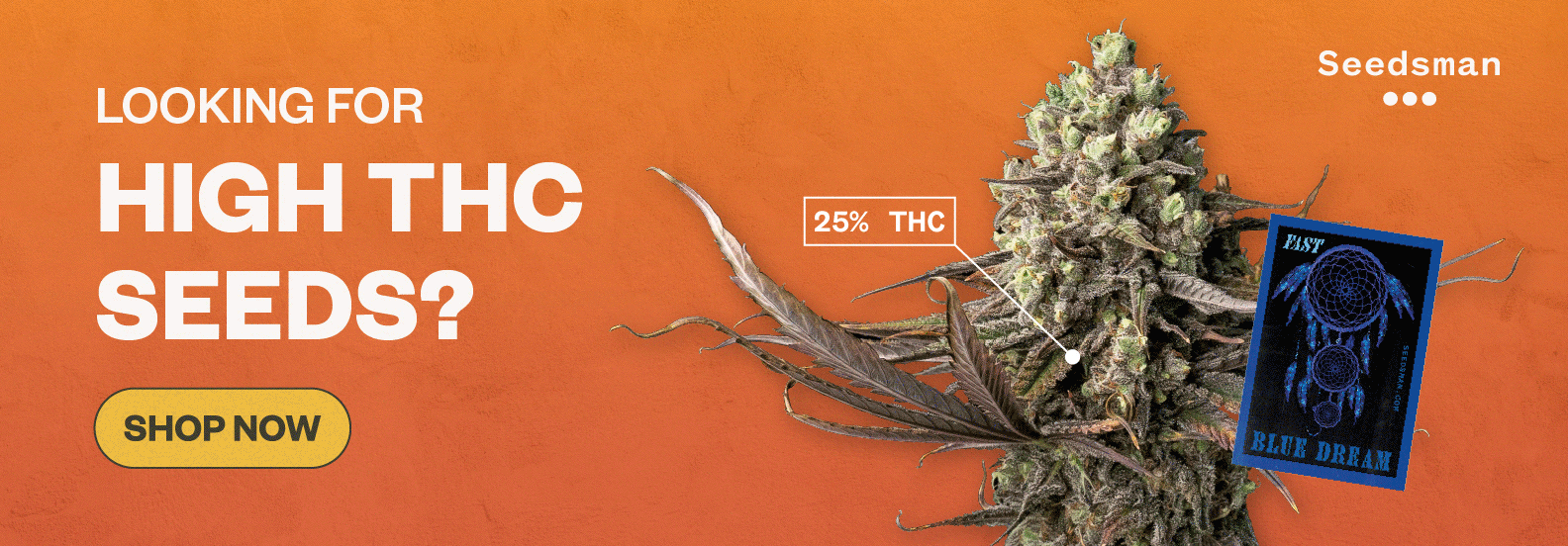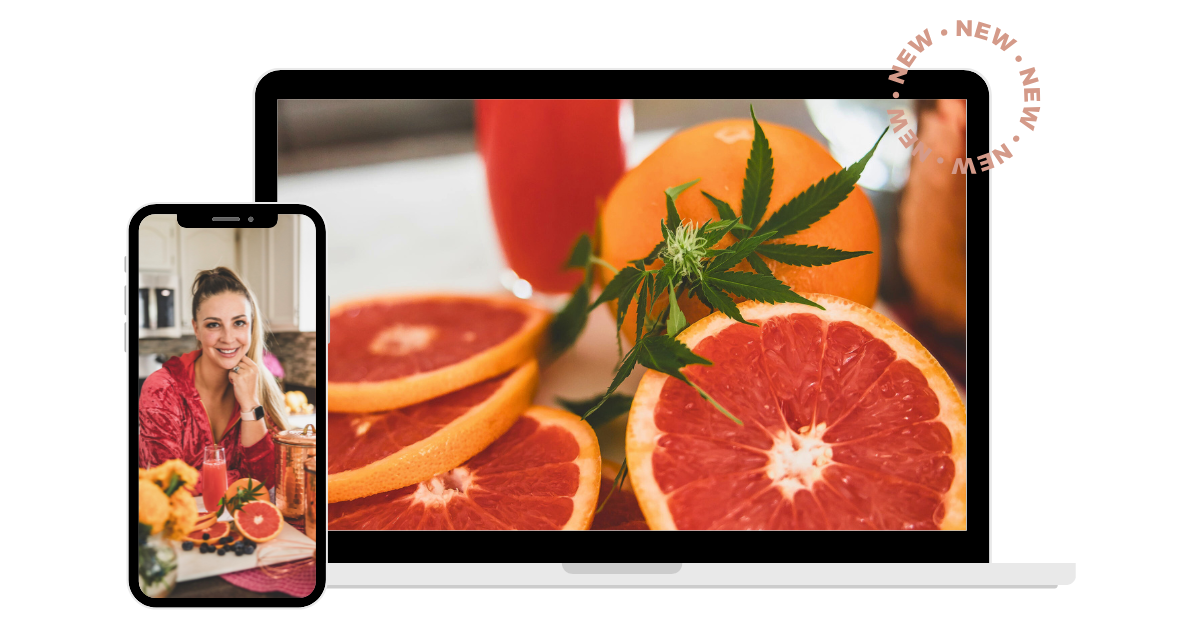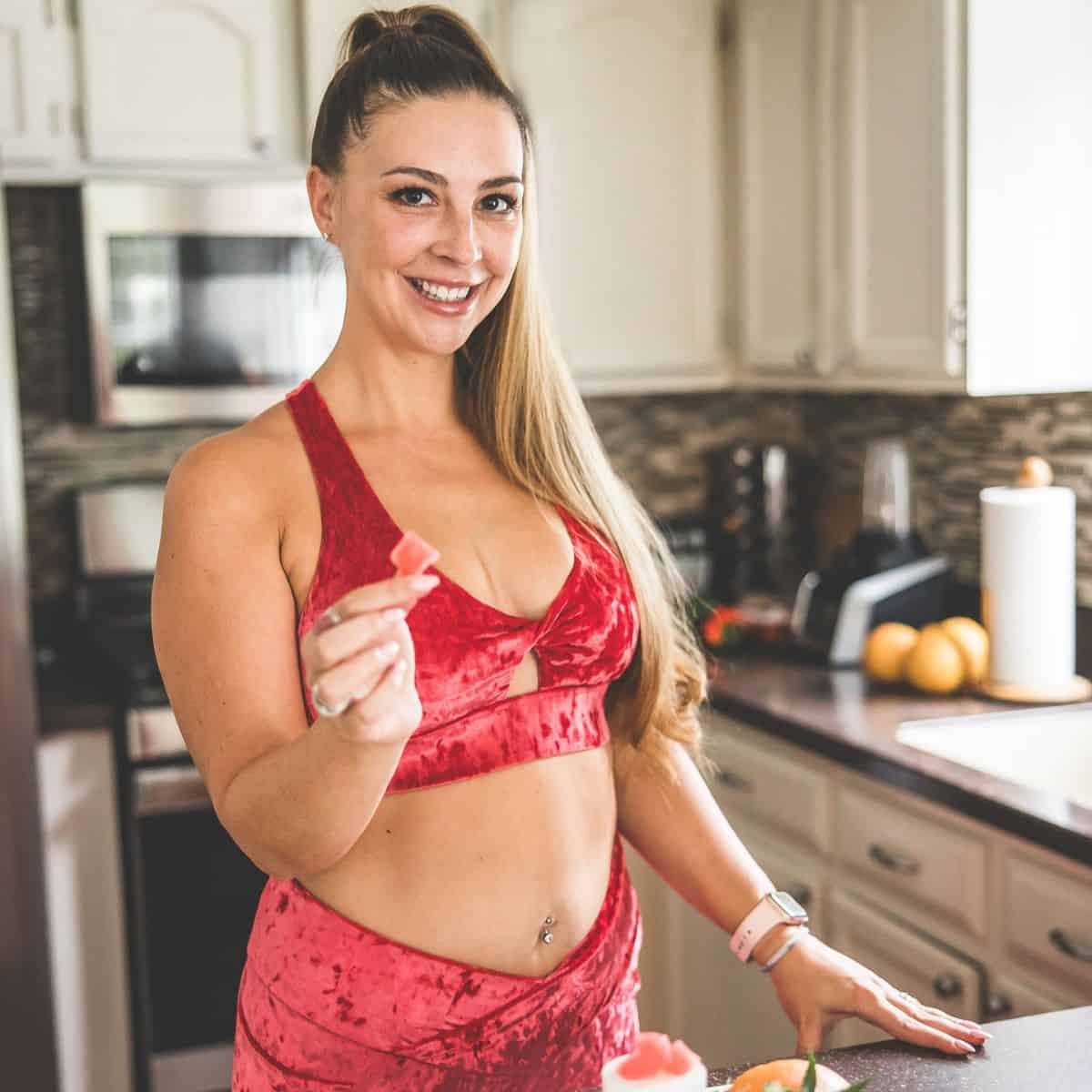Are you currently struggling with the munchies or worried you may experience them when you first consume cannabis? Learn more about how you can take control of your cravings with these 10 helpful tips for managing cannabis munchies based on real-world solutions that have worked for thousands of cannabis consumers.
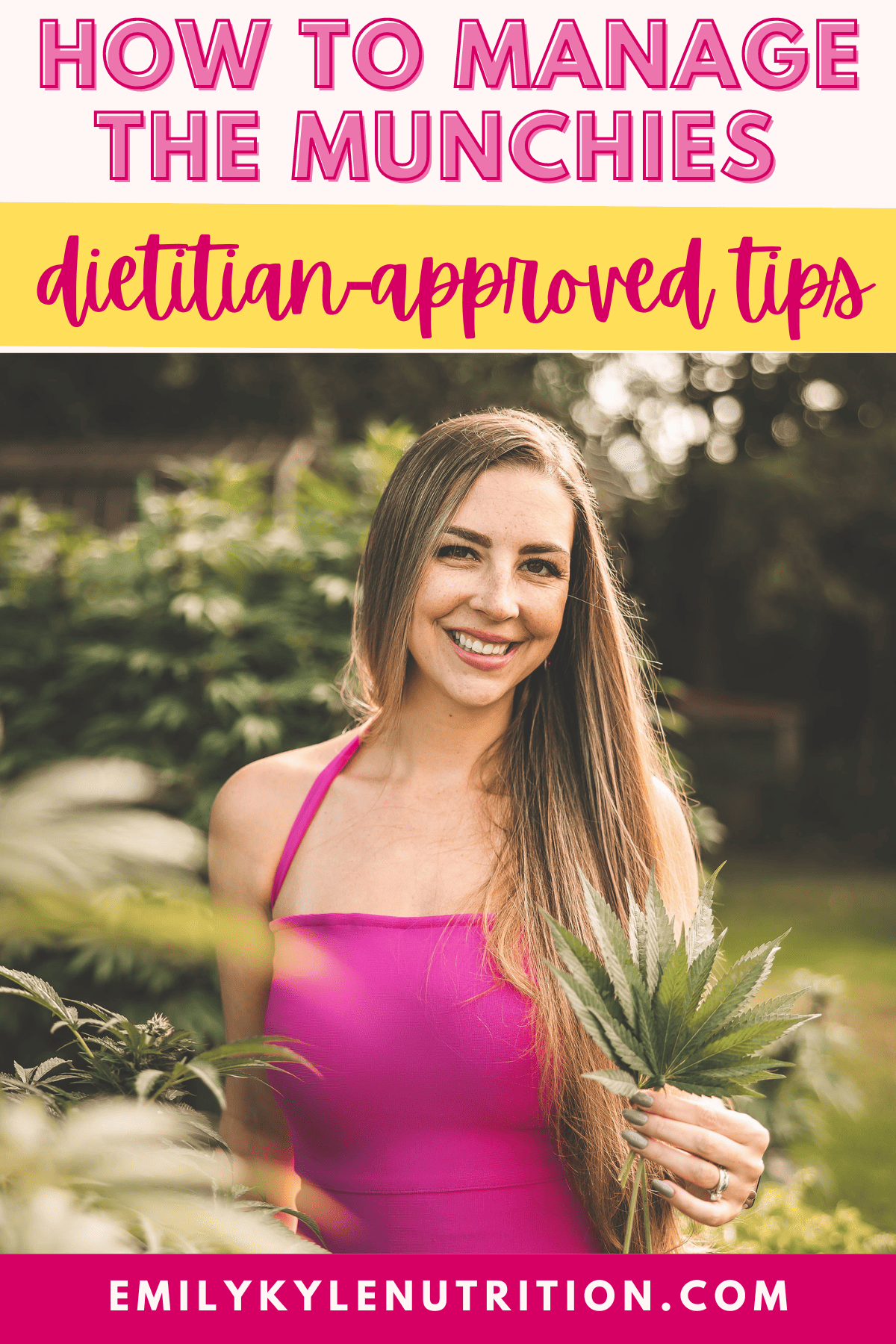
Table of Contents
- Article Features
- Why You Will Love This Guide
- All About the Munchies
- Switch Up Your Cannabis Strain
- Medicate Before a Meal
- Focus on Clean Eating and Meal Prepping
- Watch For Hidden Sugar Sources
- Learn to Indulge Mindfully
- Make a Commitment to Stay Hydrated
- Change Up Your Environment
- Get a Good Night’s Sleep
- Keep A Cannabis Journal
- Check For a Nutrient Deficiency
- Moving Forward
Article Features
- Tricks for avoiding the munchies in the first place
- What to look for to help with weight loss, including THCV
- Want to make it easy? Shop with me and have your favorite high-quality cannabis products delivered directly to your door!

Why You Will Love This Guide
I recently received this message inside my Well With Cannabis Community:
HELP! I use cannabis for migraine relief. It works wonders. But, it also causes munchies. I’ve gained so much weight….as in I’ll need new clothes weight. Is there a way to NOT get the munchies? Thanks in advance!
Well With Cannabis Community Member
As a Registered Dietitian Nutritionist and a certified Holistic Cannabis Practitioner, I feel uniquely suited to help with this problem.
Unfortunately, there is not a one-size-fits-all solution because we all react to cannabis so differently.
Thankfully, many options exist until you find a solution that works best for you.
Below, we will go over some of the most helpful ways you can work to manage the munchies so you can feel in control and enjoy your experience.
All About the Munchies
The term ‘munchies’ is a general term used to describe the powerful surge in appetite and hunger after consuming cannabis, particularly THC.
A study published by Nature Neuroscience suggests that this is due to how the endocannabinoid system reacts to introducing exogenous cannabinoids.
While this increased appetite may be suitable for those who suffer from cachexia and chemo-induced weight loss, it is an often unwanted symptom in otherwise healthy individuals.
These tips and tricks combine my experience as a dietitian and the real-world advice my Well With Cannabis Community members left.
Take whatever advice works best for you, and remember, not everything will work for every person, and that’s OK.
Below we will focus on the following strategies that may help you manage the munchies:
- Switching up your cannabis strain
- Medicate before your meal
- Focus on clean eating and meal prepping
- Be aware of hidden sugar sources
- Learn to indulge mindfully
- Commit to staying hydrated
- Change up your environment
- Get a good night’s sleep
- Keep a cannabis journal
- Check for a nutrient deficiency
Switch Up Your Cannabis Strain
When looking to curb the munchies, one of the most common recommendations is to switch up the strain of cannabis you’re using.
While we all react differently to each strain, certain traits are associated with each strain that could produce a notable result.
Many people anecdotally report that Sativa dominant strains do not cause the munchies entirely as Indica dominant strains do.
Of course, each strain can contain a variety of cannabinoids and terpenes, and each compound can have a different effect, so this is not always true for all people.
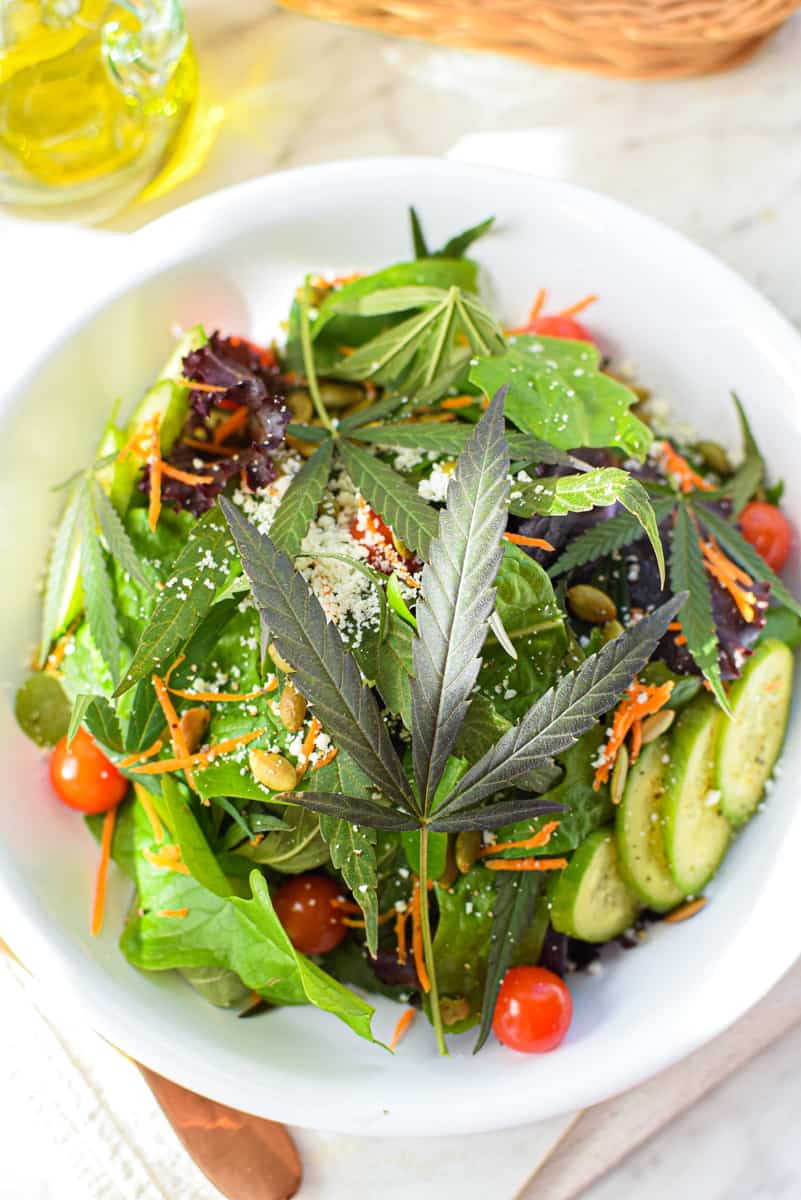
Look for the Cannabinoid THCV
Strains high in tetrahydrocannabivarin, also known as THCV, are believed to be best for managing munchies and suppressing appetite.
THCV, unlike traditional Δ9THC, is non-intoxicating and does not cause a ‘high’ feeling, but it does have a reputation for being an appetite suppressant.
According to an article published in the Journal of Cannabis Medicine, the cannabinoid THCV has potential therapeutic benefits for managing obesity and diabetes.
Even more promising, this article shows that in rodent studies, ‘THCV decreases appetite, increases satiety, and up-regulates energy metabolism, making it a clinically useful remedy for weight loss and managing obesity and type 2 diabetic patients.’
With this understanding, we can assume that choosing a strain of cannabis naturally high in THCV may also help naturally manage the munchies in humans.
Unfortunately, THCV is a minor cannabinoid which is not found in all cultivars and can be hard to come by.
Only a handful of strains have measurable higher amounts of THCV; at that, it’s usually less than 5% THCV.
Specific strains recommended by others in the group that reportedly help manage the munchies due to their potential THCV content include:
- Durban Poison
- Girl Scout Cookies
- Pineapple Express
- Willie Nelson
- Blue Dream
Look for the Terpene Humulene
Terpenes, also known as terpenoids, are molecules found in the flowers, bark, seeds, leaves, stems, and roots of all herbs, spices, fruits, and vegetables.
These molecules are aromatic oils found within the trichomes that give the cannabis plant its distinctive taste and smell.
Along with cannabinoids, terpenes are responsible for various physiological effects on the human body, and each terpene has potential benefits.
One terpene being preliminary researched for its role as an appetite suppressant is called humulene. This terpene is also found in hops, cloves, and sage.
While on terpenes, some anecdotally report that the terpenes limonene and beta-caryophyllene are appetite stimulants.
Of course, choosing your cannabis strain and terpene profile may be difficult if you’re not growing it yourself.
Another good option to have more strain selection opportunities is getting a medical marijuana card, which will provide you with more options from your local dispensary.
Medicate Before a Meal
Whether you smoke, vape, enjoy cannabis sublingually, or as an edible, one standard recommendation is to plan your cannabis consumption around your mealtimes.
Many people often time their cannabis session to coincide with their meal, so when it’s time for the munchies, it’s also time to sit down and eat.
This way, they can enjoy their meal without any further munchies afterward.
Whether you’re enjoying a healthy cannabis recipe or a traditional meal, this can be a good strategy.
Many others state they prefer the opposite approach, to eat before they medicate so the munchies don’t come on so strong.
That way, they are full and satisfied before consuming cannabis and therefore less likely to get the munchies or eat uncontrollably.
I recommend you experiment with both of these timing options to see if one or the other works better for you.
Focus on Clean Eating and Meal Prepping
The consensus among cannabis consumers is that everything tastes better when stoned, so there’s no better time to enjoy healthy snacks.
It’s beneficial if those healthy snacks are already prepared thanks to a little bit of meal prep.
Having healthy snacks prepared means you’ll probably enjoy them while stoned and will be more likely to eat them because of the convince of having them pre-made.
Clean eating and meal prepping don’t have to be complicated or require much effort.
It can be as simple as washing and cutting your fruits and veggies when you get home from the grocery store or as detailed as prepping your meals for the entire week.
If you’re brand new to clean eating and meal prepping, my 4th cookbook, The Clean Eating Meal Prep Cookbook, is the perfect resource to help get you started.
Focus On Foods You Love
Love crunchy foods like chips?
Choose other crunchy foods, like popcorn, pickles, nuts, celery, and carrots with homemade ranch dressing.
If you’re looking for something more flavor, try chipotle pumpkin seeds or dried, salted chickpeas.
Another suggestion is to get an air fryer and keep your favorite veggies on hand.
One group member reported losing over 40 pounds by enjoying veggies prepared in their air fryer as a tasty munchie snack.
Love sweet foods?
Choose sweet options like cold grapes, mangoes, fresh berries, frozen fruit, fruit leather, natural fruit popsicles, and more.
Meal Prep When Possible
Keeping healthy snacks already prepped is critical for a lot of people. As one member has said, ‘Once I’m high, peeling a carrot is too much effort.’
All giggles aside, this is very true for most people.
You can also prep your ‘unhealthy’ snacks into portion-sized containers and bags to be more mindful about your portion sizes and how many are consumed.
Keep Trigger Foods Out Of The House
And for those who feel they need a more restrictive approach, many report that they simply do not buy their favorite ‘trigger’ foods.
If there’s nothing ‘bad’ in the house, there’s nothing ‘bad’ to eat.
Many members also report a good dose of willpower and self-discipline to help them.
Watch For Hidden Sugar Sources
While it’s good to consume whole fruit and all-natural sweeteners, it’s also important to know hidden sugar sources.
Current dietary guidelines recommend that your added sugar consumption does not exceed more than 10% of your daily calories consumed.
But as a reminder, please don’t give up on whole fruit just because you’re worried about the sugar content.
This naturally occurring sugar is what your body needs to function properly and is not included in the recommendation.
Rather than cutting whole fruits from your diet, look out for processed foods that frequently have hidden added sugars.
Thinking of sugar in terms of teaspoons can make it easier for people to visualize how much sugar is in their food.
- Every 4 grams of sugar = 1 teaspoon
- Does the nutrition facts label say 16 grams of sugar? That means 4 total teaspoons of sugar
Try making homemade versions of your favorite processed or prepackaged food whenever possible to control how much sugar you add.
In addition, pairing fats and proteins, which can help stabilize digestion, can help naturally manage blood sugars.
SAVE THIS GUIDE 💌
Learn to Indulge Mindfully
Just like little kids – the more we resist something, the more we want it.
And the same goes for sweets.
Just imagine this:
You are hosting a birthday party and are craving a piece of cake.
You deny that cake because you want to be ‘good’ while others are around, but you still want the cake deep down.
And once everyone else has left, you have not only one piece of cake but another, and maybe even another.
There is a big difference between eating dessert to enjoy it as an experience and the company you’re with and eating sweets as a coping mechanism for other problems you experience in your life that are not food-related.
Learning to differentiate between the two is a massive step in creating a better relationship with food.
Part of being in control of your healthy relationship with food is being able to look at food as more than just nourishment for the body, but often for the mind and soul.
Don’t deny yourself the ability to enjoy a sweet here and there; just become more aware of your triggers and learn to indulge in your favorite treats mindfully and responsibly.
Make a Commitment to Stay Hydrated
Dehydration is one of the most common causes of unwanted cravings and, unfortunately, all too common.
According to the CDC, chronic dehydration can become a severe medical condition if not addressed.
Dehydration may lead to many unpleasant symptoms, including excessive thirst, fatigue, brain fog, memory problems, irritability, headaches, and yes, you guessed it, even food cravings and munchies.
When the body senses something is wrong, it will do anything to return to its normal state, a process known as homeostasis.
Ironically enough, the role of the endocannabinoid system in the body is to help maintain homeostasis.
By luring you to food, your body is trying to get you to consume more liquid and thus fix the problem of dehydration.
Unfortunately, it can sometimes be hard to differentiate between when you are hungry or just thirsty.
Taking a minute to enjoy a glass of water or tea and then reassessing how you feel five minutes later is a great way to assess your cravings.
Another recommendation is to not drink your sugar.
Besides water, tea, black coffee, and diet drinks, most drinks contain sugar.
That sugar is likely to be 100% added sugar and almost always way more than anyone should have.
Even fruit juice contains high amounts of sugar, so watch out for this, as well as soda and other high-sugar beverages.
Change Up Your Environment
It’s 3pm. You’re sitting in the office when you get a super annoying email from your boss.
You’re trying to keep it cool, but your stress levels are rising.
You have two more hours before you can head home.
So what do you do? Reach for a sweet treat to tide you over.
Okay, that was me when I worked in the hospital – can you relate?
Stress is a huge craving trigger for me, and unfortunately, these days, running my own business, I encounter more stress than ever before.
While I like to think that I manage it well, I noticed that I was often reaching for a sweet treat to soothe my anxious feelings rather than sorting out the problem or doing something to fix it.
In this situation, I have found that a brisk 10-minute walk is enough to shake my craving and reframe my mindset to get ready to be back at work, productive, and focused.
And I’m not alone.
One group member who recommended going for a walk or workout after medicating, rather than eating, has lost over 100 pounds by consuming cannabis before heading into the gym.
Another member said the high helped her zone in on the elliptical or treadmill.
Changing your routine and environment by heading to the gym when you feel the munchies coming on may be just the solution you need to pick up a new, healthier habit.
Get a Good Night’s Sleep
This is a more proactive approach, but getting a good night’s sleep can help minimize cravings throughout the day.
New evidence suggests that the more sleep an individual gets, the healthier they are.
One study published in the American Journal of Clinical Nutrition has shown that participants who increased the amount of sleep they got each night reduced their added sugar intake by as much as 10 grams the next day, compared with the amount of sugar they consumed at the beginning of the study.
Setting yourself up for a good night’s sleep is undoubtedly easier, but it does lead to great rewards afterward.
To get started, try to create a peaceful environment in your bedroom.
Clear the clutter and get a good-smelling candle or essential oil diffuser.
Set your phone away from your bed while you’re sleeping, and if you’re having trouble falling asleep, try my CBN sleep gummies to help you drift off into sleep peacefully.
Keep A Cannabis Journal
When trying different strains of cannabis and eating different foods, it can be overwhelming to remember how each new choice made you feel.
For this reason, I recommend tracking the effects, relief, and associated munchie levels with a cannabis journal.
Keeping a cannabis journal will help you reflect on what has worked and hasn’t and can help you narrow down which change is best for you.
Check For a Nutrient Deficiency
If you’ve made all of the changes above and still feel like you have uncontrollable munchies, you may have an underlying problem.
Nutrient deficiency is one of the most common underlying causes of uncontrollable eating.
If you don’t already, starting a daily multivitamin may be a good idea to help address any underlying deficiencies.
And if you suspect a specific nutrient deficiency is at play, please be sure to reach out to your medical doctor or registered dietitian, who can run tests to check your nutrient levels.
Moving Forward
I hope this article helped you learn more about how you can take control of your cravings.
These 10 helpful tips for managing the munchies associated with cannabis use are based on real-world solutions that have worked for the students in my Nourish Your High Masterclass.
If you are looking for additional support to help you on your cannabis journey, I hope you consider joining us!
Nourish Your High Masterclass
Imagine a holistic approach where healthy living aligns with your unique needs, including empowering choices like mindful cannabis use. This masterclass is your opportunity to explore new possibilities, unlock fresh motivation, and create sustainable, feel-good habits that truly work for you.
